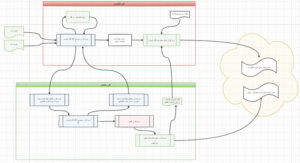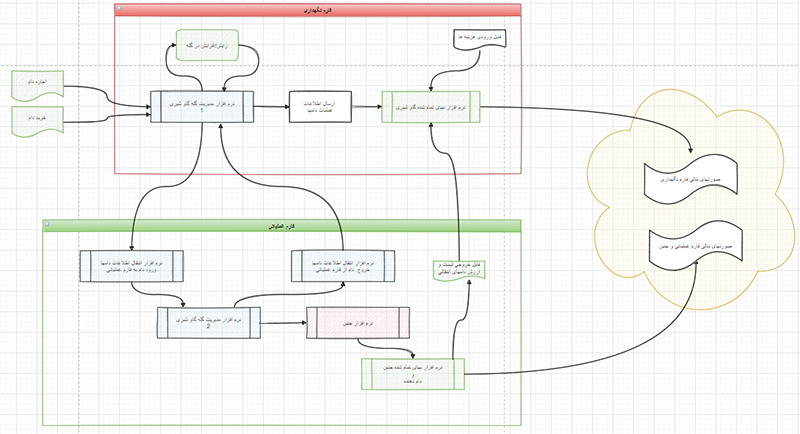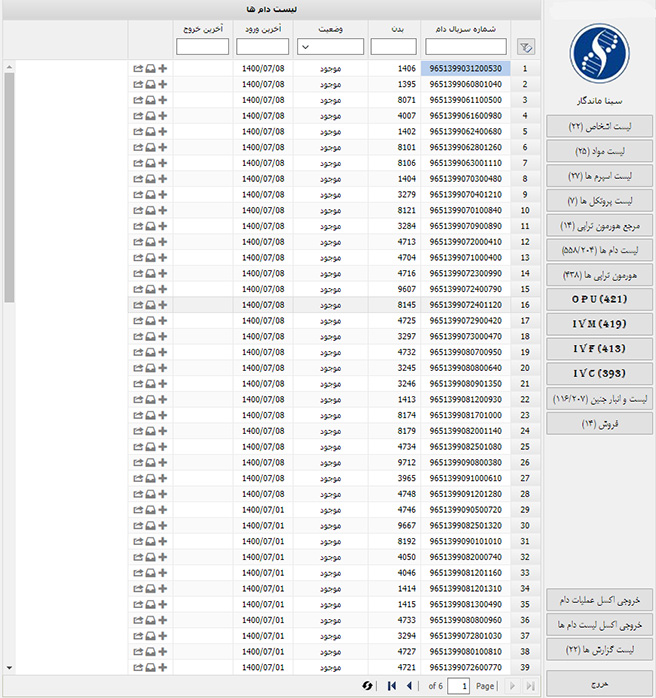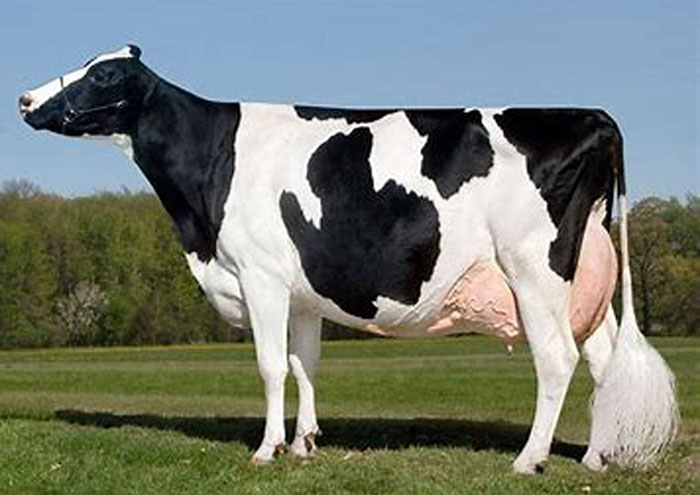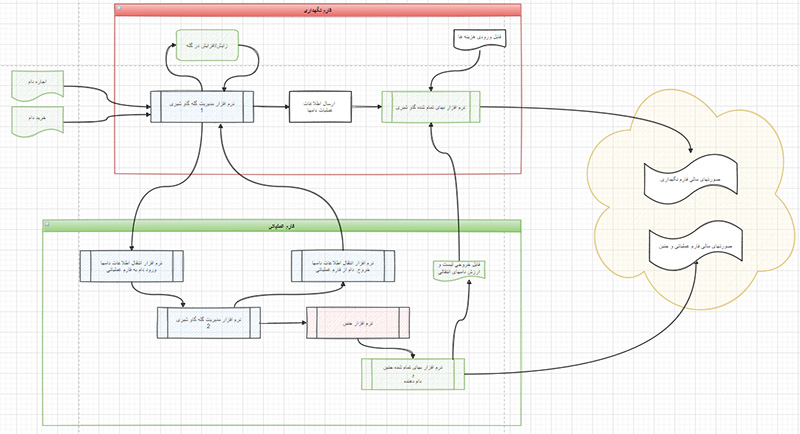Abstract
The production of cow’s milk in the traditional manner does not efficient in terms of economic issues, because of increase in urban population, rising levels of culture, and etc. The first group of dairy cows was imported to Iran about 60 years ago, and then this industry section has experienced great growth, like agriculture. Due to insufficient knowledge of industrial farming and also weak management in Iran, there are still shortcomings in this area. Cattle raised in complex biological processes with abundant food and health facilities in temperate regions of Europe and the United States are sensitive to environmental stresses. Therefore, ranchers ought to use the correct methods of raising cattle and calves in different climatic conditions of Iran, such as providing a suitable place, feeding method, breeding, health principles and new techniques. Unfortunately, carelessness in choosing the right climate trigger many shortcomings and damages in milk production and cattle reproduction. In this study, along with introducing key factors in the management of industrial farms and examining their current situation, solutions are proposed.
Introduction
Milk consumption plays the main role in the health of society, as well as Industrial livestock production leads to creating employment opportunities and sustainable agriculture. Hence, problems of this industry should be addressed. The historical evidence shows that Industrial livestock production began with the arrival of European and American dairy cattle breeds until provide milk to the urbanites in 1954. As a result, the demand for milk production was increased following the growth of population, culture and hygiene condition. Importing high-yielding dairy cows and their offspring in industrial farms addressed these needs.
Management is an essential factor affecting the technical and economic performance of farms and livestock. The aim of proper management is to achieve optimal performance, profitability and productivity. Therefore, evaluation of management on the performance of livestock is essential. The results have indicated that productivity and management metrics have significant effects on milk production and the profitability of livestock. Forage, fodder corns, Alfalfa consumption and employees have the main positive effects on milk production, respectively. Besides the profit function diagram showed that the price of fuel after alfalfa has the most negative effect on the profitability of livestock. On the other hand, forage prices, labor wages, and the cost of each inoculation had a positive effect on profitability.
Ordinary types of livestock in Iran
۱- Advanced and modern industrial farms breed the most popular strains of high-yielding cattle such as Holstein, Brown Swiss and Jersey.
۲- Breeding hybrid cows in semi-industrial farms, which are produced by mixing foreign and Iranian strains.
۳- Indigenous farms where “Golpayegani” and “Sarabi” cows are bred.
Using complex biological processes turn native cows into high-yield cows that produce more milk and meat. premium lactating cows produce 20 kilograms of milk per kilogram of live weight during a lactation period; That is, 12,000 kg per year and a daily average of 39 kg. Therefore, the farmer should notice the advanced science and technology in breeding industrial cattle. The purpose of this study is to identify the factors affecting the breeding of industrial cattle and use them for optimal exploitation properly.
It has been proven that traditional and semi-industrial farms produce 70% of milk by raising sheep and goats, while 30% of milk is obtained in industrial farms.
Features of industrial livestock
High-rate milk production and dry matter intake efficiency results in affordable protein production, lower water consumption and occupation creation. Nowadays, to produce one liter of milk in an industrial farm, 90% less land, 65% less water and 64% less carbon emissions are possible. In advanced farms, calves are separated after a few hours (maximum 12 hours) and fed manually or by machine.
Limitation
It should be noted that the manipulation of cow natural environment for high-rate milk production and feed efficiency leads to sensitivity from environmental stresses and their breeding requires special care and management. Therefore, providing the desired conditions in farming Industrial is according to below:
۱- Milk production should be based on the environmental, economic and social conditions of the country.
۲- Prior to establishment, aims must be determined and the necessary knowledge and experience gained.
On the other hand, the correct method of raising cattle and calves including determining suitable places, maintaining manner, feeding and breeding should be educated farmers to able to apply new principles and techniques, otherwise use expert and leading consultants in the field.
Factors affecting the optimal management of industrial farms:
Inattention to factors in optimal livestock management have adverse effects on income by disrupting production.
۱- Climate and location
۲- Livestock management
۳- Feed management and feeding
۴- Reproduction management
۵- Breeding management
۶- Suitable place
۷- Health
۸- Deletion rate
۹- Heifer management
۱۰- Herd composition
The following is a brief description of each of the factors:
Climate and location
The optimal performance of livestock is achieved when all environmental factors are tailored to their needs. The temperature stress is an essential factor. In the comfort zone, livestock welfare is ensured and performance is not affected by temperature stress. Therefore, it is necessary to be aware of the comfort zone as follows. Holstein cattle and Swiss cows produce milk at temperatures of 4 to 24 degrees Celsius, but at temperatures below -10 degrees Celsius and above 25 degrees Celsius, their production decreases. For example, Holstein cows can produce up to 50% milk at a temperature of 32 degrees Celsius. Cows produce milk at 15-27 degrees Celsius and will drop production when the temperature rises above 25 degrees Celsius. Therefore, in hot climates, especially hot and humid climates, the livestock suffers from stress, which depends on the severity. And during the period of stress, the livestock shows reactions (behavioral, physiological, immune, etc.). If the intensity or duration of stress is low, the adverse effects are mostly compensated by behavioral and physiological extent. In this case, the livestock is in normal pasture, but is affected by mild stress and its production is slightly reduced. It can cause behavioral, physiological, and immune impairments if the severity or duration of the stress period exceeds the tolerance threshold. Symptoms of temperature stress include aligning the body with the direction of the sun, seeking shade, refusing to sleep, reducing food intake, accumulating around drinking fountains, confusion and restlessness, reducing or stopping rumination, open mouth and difficulty breathing and excessive salivation.
Temperature-humidity index
The temperature-humidity index is used to measure the effect of temperature and humidity on cattle performance. This index is one of the best indicators to show the turbulence degree of cows from the effect of temperature and humidity. At a temperature-humidity index above 68, the milk production and reproduction performance of cows decreases. At a temperature of 25 degrees Celsius and a relative humidity of 5%, the temperature-humidity index = 67 cows is stress-free and its milk production is high, while at the same temperature of 25 degrees Celsius and a relative humidity of 60% and above, cows are in the medium stress range and its production is reduced. At a temperature of 38.3 degrees Celsius and a relative humidity of zero to 10%, cows are on the border of moderate stress and their production is relatively low, but at a temperature of 38.3 degrees Celsius and a relative humidity of 95%, the animal dies. Increased body temperature and respiration rate in the high temperature-humidity index for the following reasons, has a side effect on the production of lactating cows, dairy cows, for future production.
Acute temperature stress leads to:
۱- embryo death.
۲ – In late pregnancy, reduces the growth of the embryo, which in turn can increase the mortality of newborn calves.
۳- It reduces the intensity of estrus (shortening the duration of estrus period) and it is difficult to identify estrus cows.
Ways to prevent stress in dairy cows in hot weather
Use of canopies, humidity (humidify the environment), cool drinking water, fences, especially in places where there is no air flow. It should be noted that the method of watering and the amount of water used in industrial farms varies depending on the climate, the type of feed consumed, the level of production and other factors.

